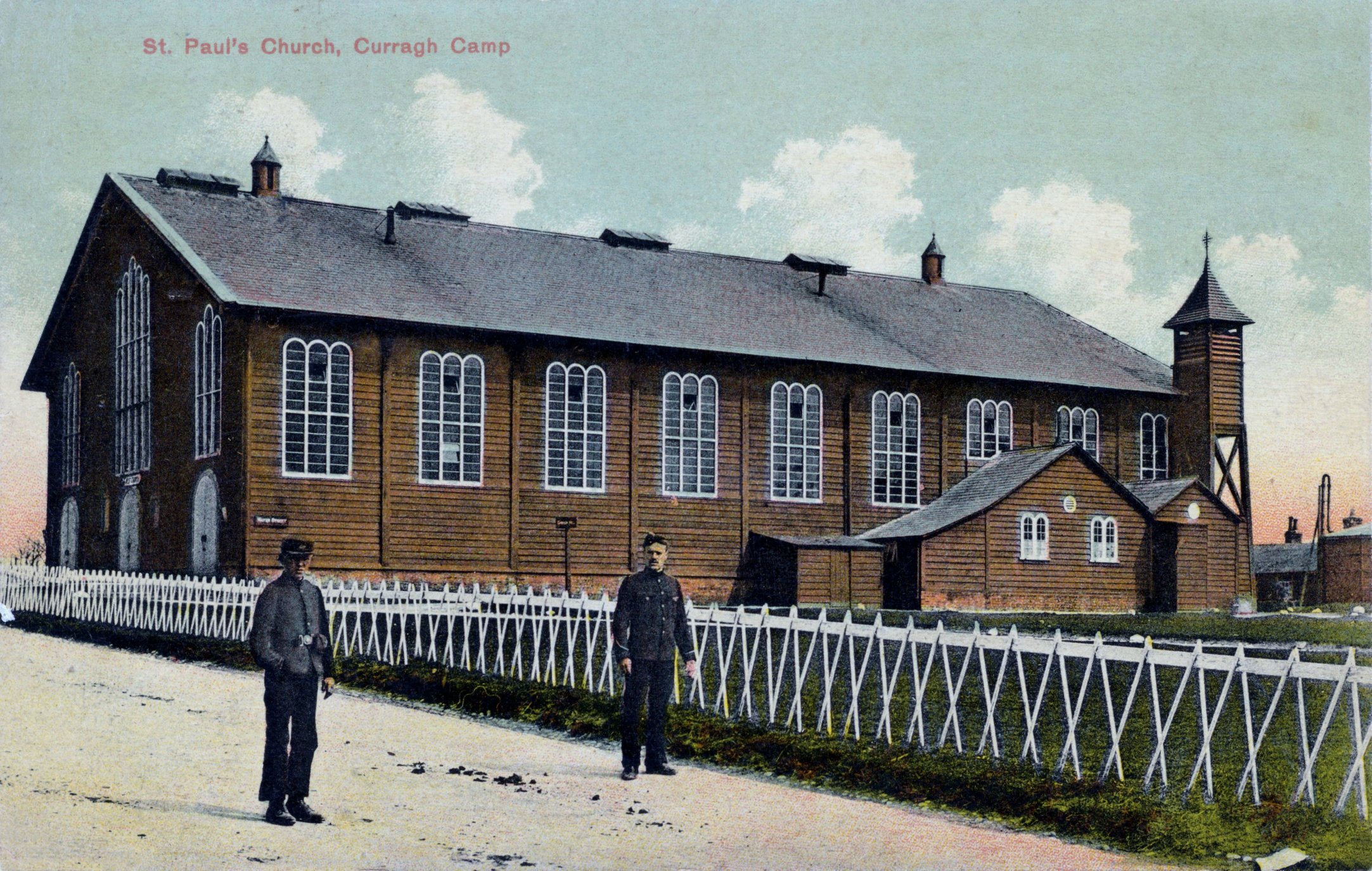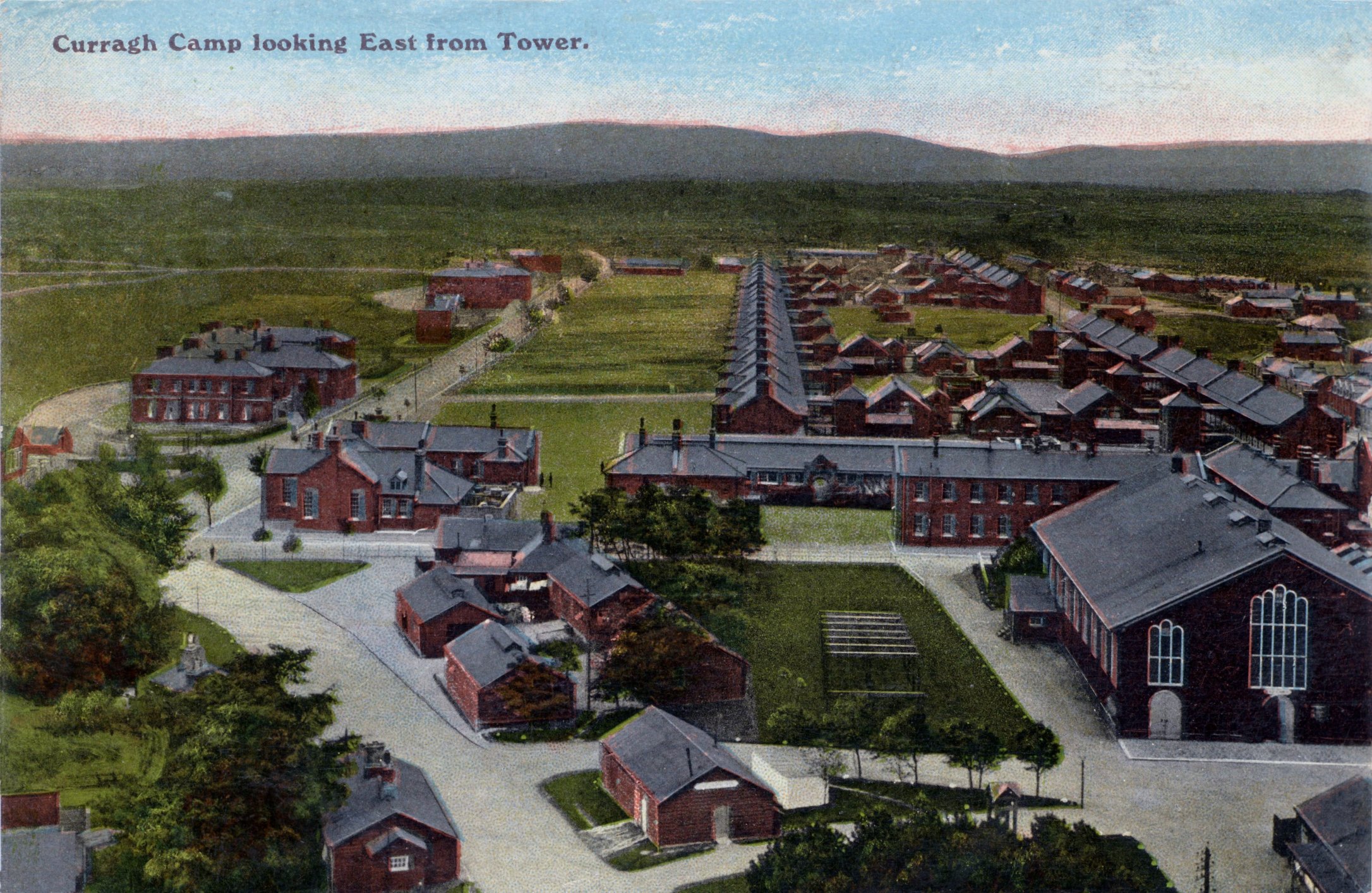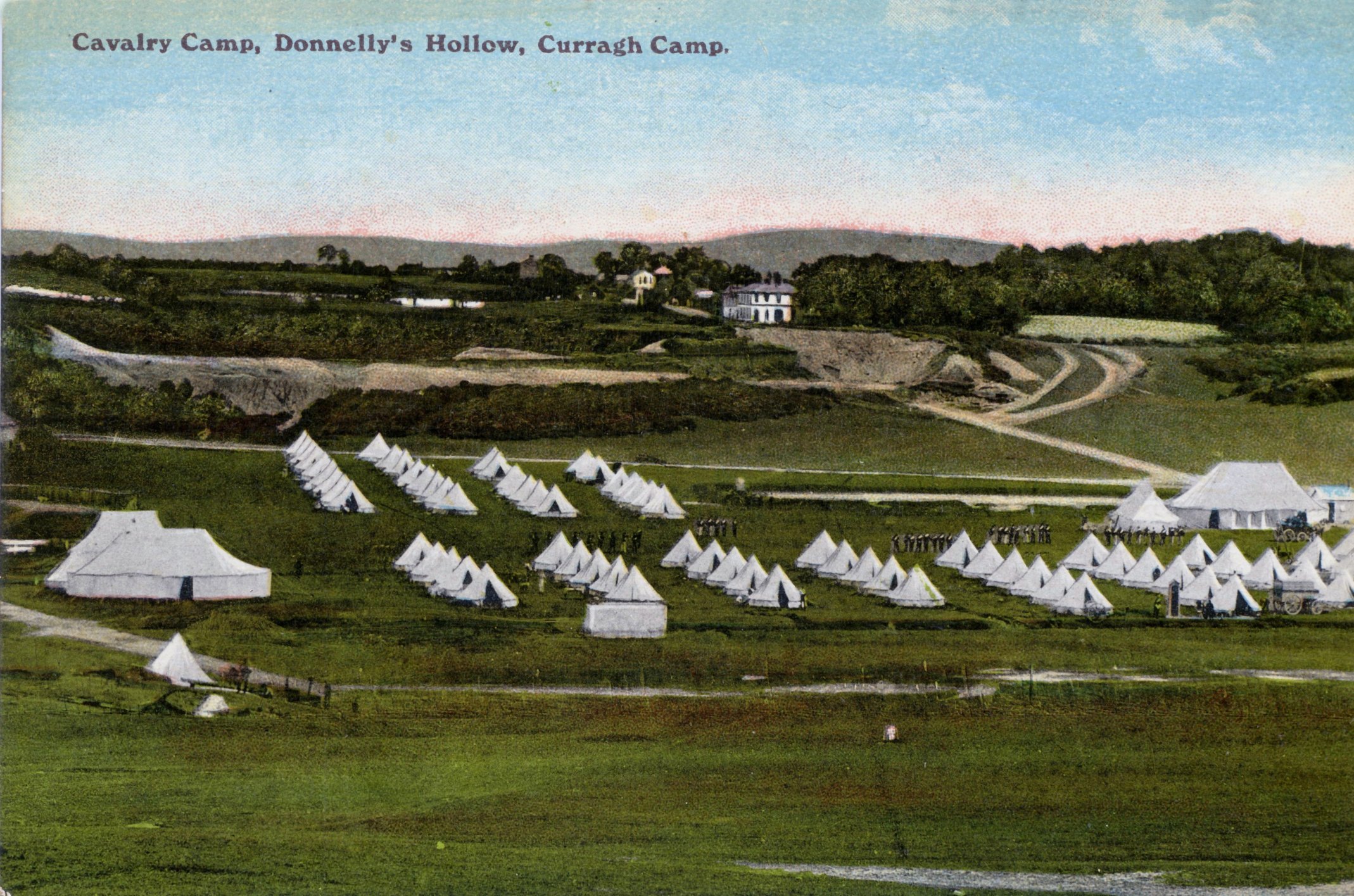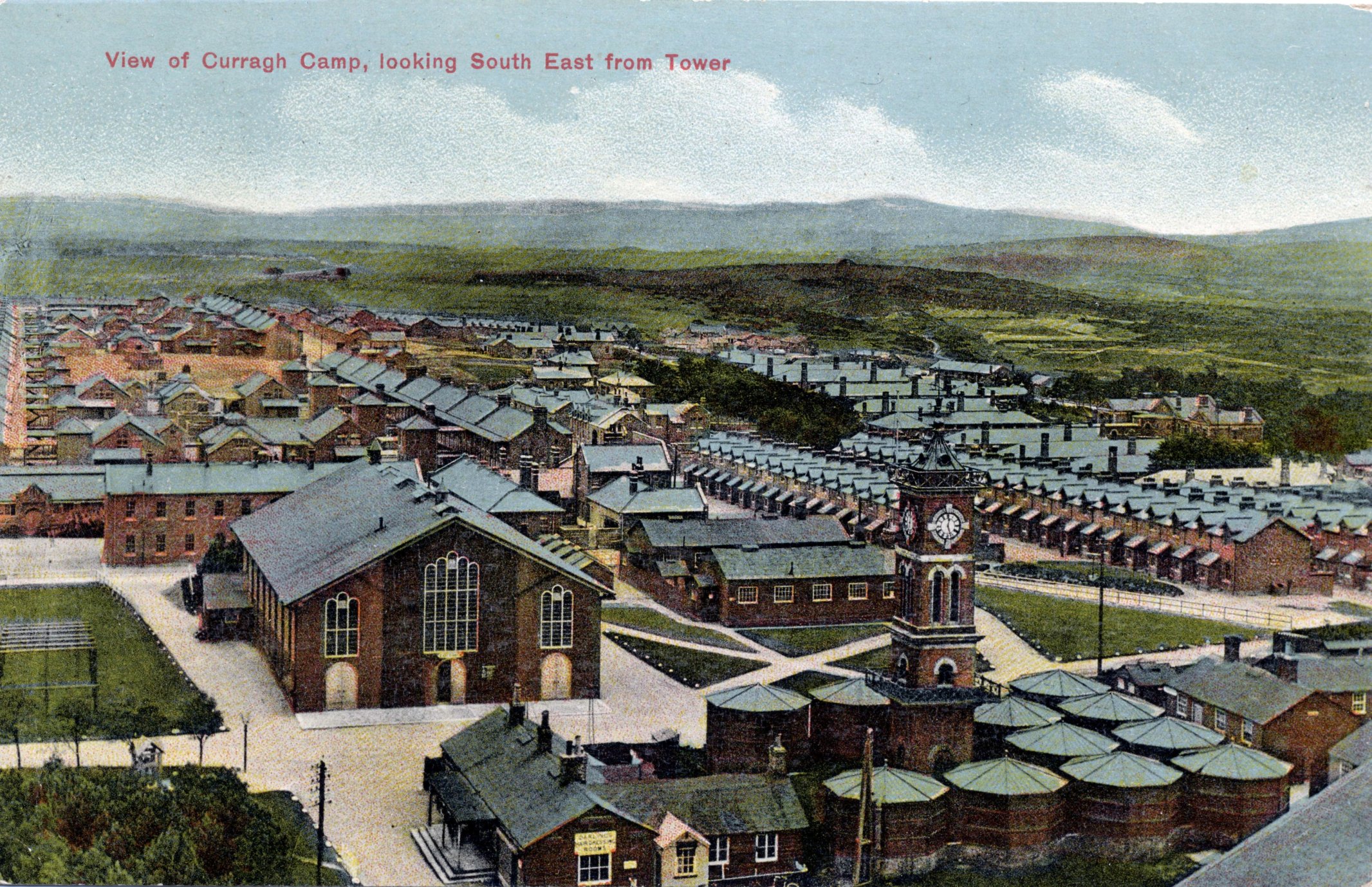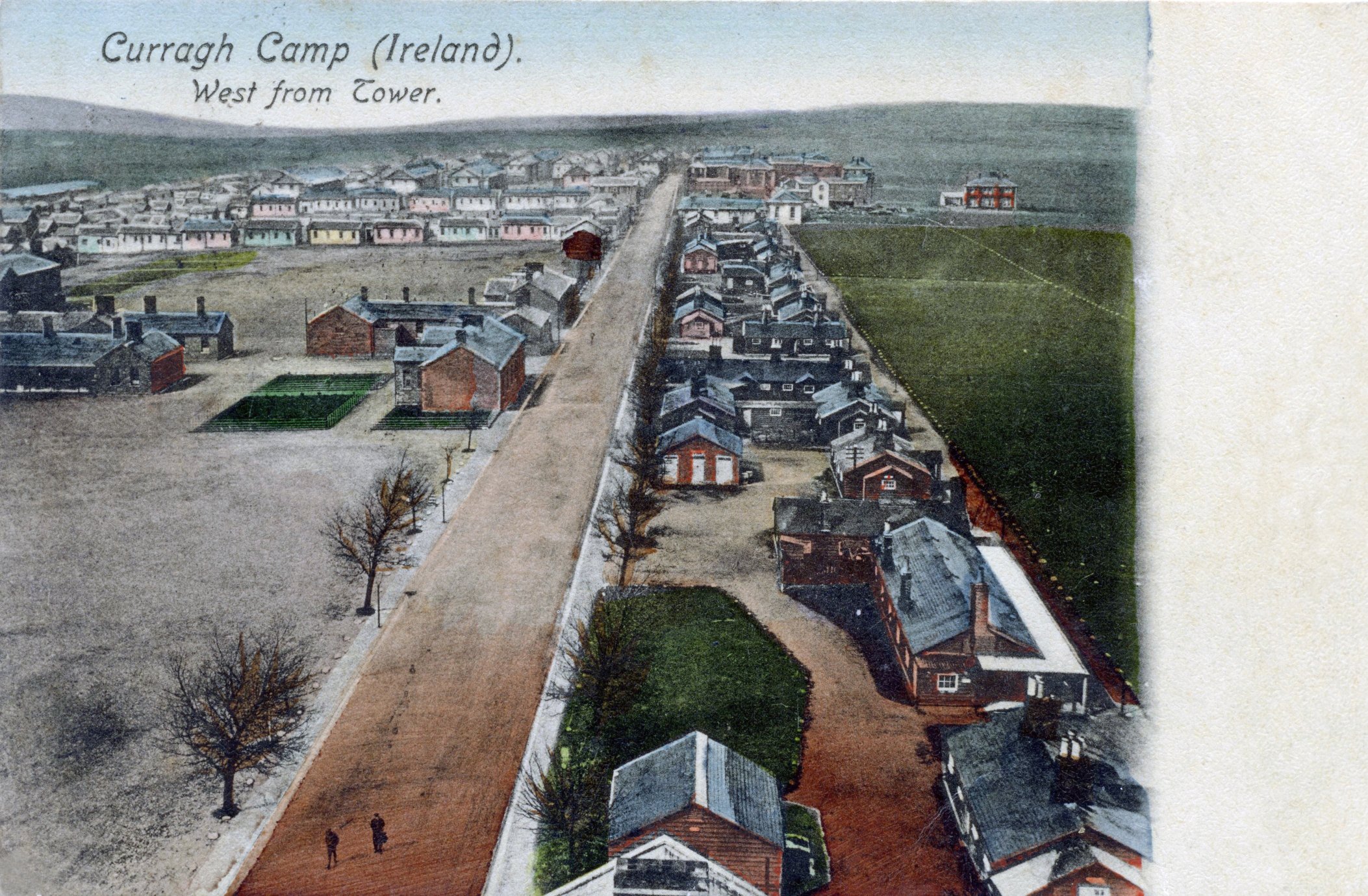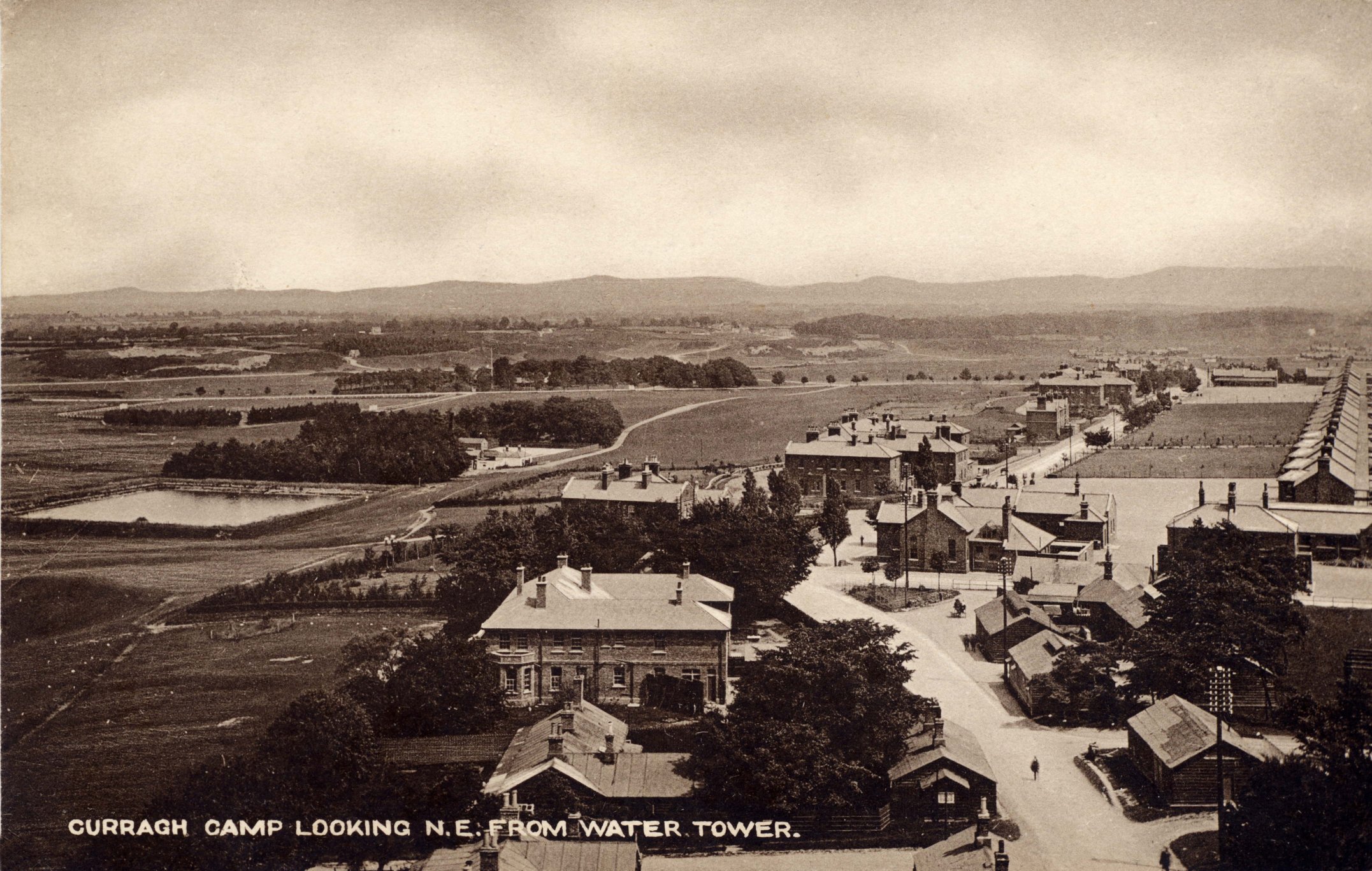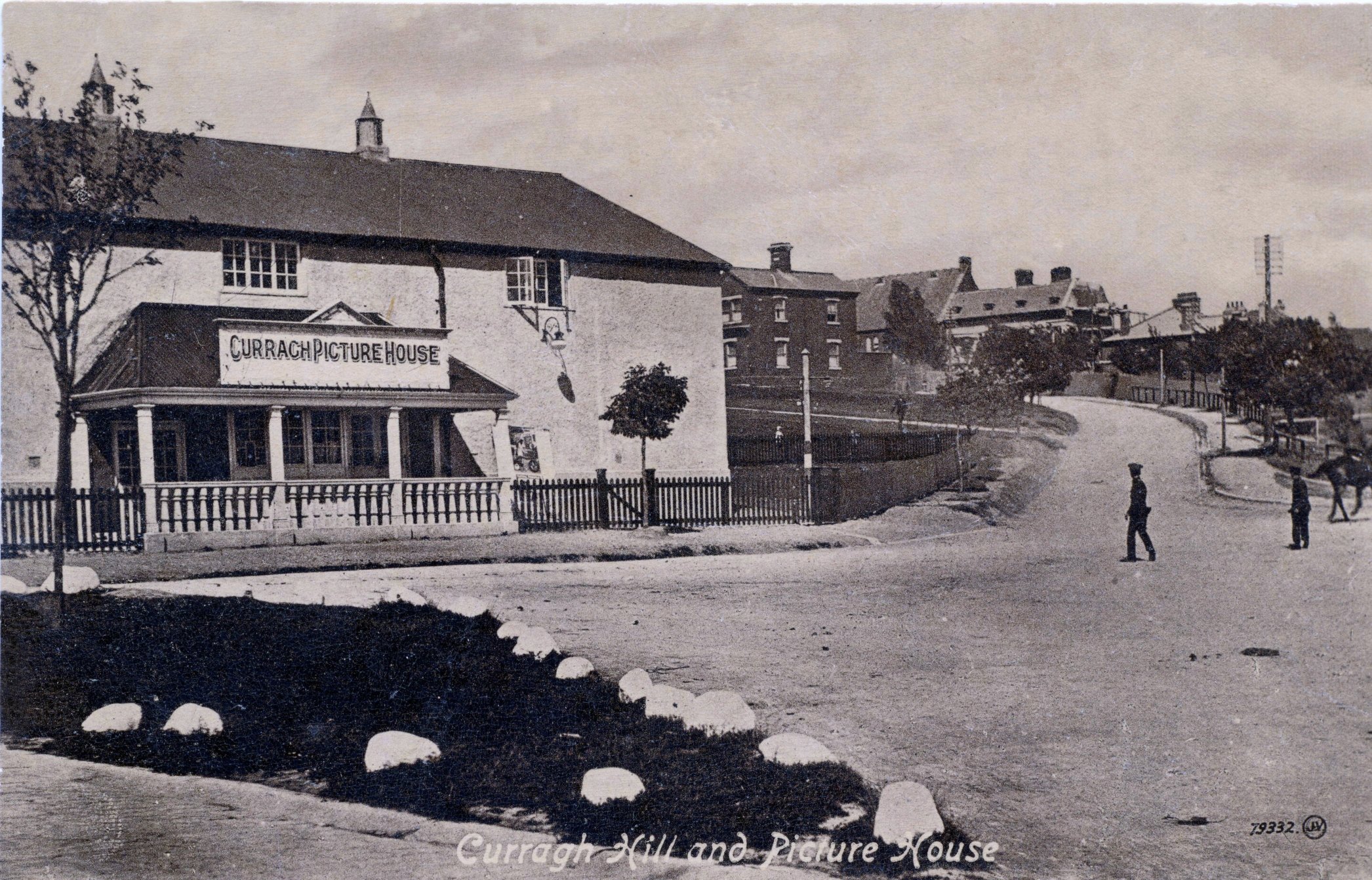Post by Matt McNamara on Aug 27, 2010 22:59:43 GMT
It was the Crimean War (1853-1856) which led to the construction of the first permanent camp on the Curragh of Kildare. To meet the growing need for barrack accommodation, Gen. Sir John Burgoyne, Inspector General of Fortifications, intimated to the Commanding Royal Engineer in Ireland on the 24th of January, 1855, that a camp for 10,000 infantry “would probably be required at the Curragh of Kildare.”
As a result of these indefinite instructions a careful search was instituted for plans and records pertaining to the canvas camps which stood upon the Curragh at the turn of the 19th century. It was hoped that much information of value would be gained regarding sites to he avoided, sources of water, natural resources of the locality and such like. However, the search proved fruitless other than locating the site of a former camp, shown upon the Ordnance Map and the “very imperfect accounts gained from local residents and from some few old officers, as to the number encamped and their recollection of occasional distress for want of water.”
Little active measures could be taken until the 27th of February, 1855, when full authority wa~ received to proceed with work on the camp. By the 1st of March advertisements were issued tor contracts and on the 13th of March the tender of Messrs. Courtney and Stephens, Blackball-place, Dublin, was accepted for the construction of 430 soldiers’ huts, 10 for staff sergeants, and 10 for officers’ stables, for the sum of £37,720. Tenders for additional works were accepted shortly after and on the 18th of March work ~ommenced. On the 9th of July accommodation for 5,000 men was fit for occupation by troops. It will be agreed that the camp was constructed with great speed.
“The huts, with a few exceptions, are constructed of American white fir timber, deals and battens, of the first quality, excepting the sleeper-sills, door-posts, angle posts, heel-posts and their sills, which are of the best Memel, Dantzic, or red pine.” The construction of the camp saw a large influx of labour into area and many of the men slept in the huts they were erecting or took lodgings in the locality. One such man was John Denvir, from Liverpool, who came to the Curragh in the summer of 1855 to work as a “flogger.” Denvir recalls how “ as fast as we finished them, the huts we were building were occupied by the military.
Some of the more permanent buildings constructed at this time are still in use but all of the timber structures, with the exception of one constabulary hut at Lumville, have been removed or replaced. In the general arrangement of the camp it was considered important to combine the following requisites, viz.: “the separation of regiments in their discipline, recruit and punishment drills; good regimental police arrangements; facilities for the assembly of the troops on ordinary occasions, and general parade; and the avoidance, as far as practicable, of the risk of extensive loss from fire.” In order to achieve these requisites the huts were distributed in a series of squares, ten in number, for 1,000 men each. Each of these squares had an interior space for drilling, a front and rear entrance to facilitate control and was divided from its neighbouring square by an eight foot high sod fence, which would facilitate police control and as a further precaution against fire.
The general layout of the camp was east and west fronting to the north. The camp was divided into two divisions—the Left Division, from the Flagstaff west to Hare Park, and the Right Division, from the Flagstaff east to the present golf club. The squares were not named but were lettered alphabetically from west to east, the letter “I” was not used. Thus “A” lines was nearest to Kildare town, while “K” lines was near the present golf club, an area known as “K” lines to the present day
The provision of a plentiful supply of pure and wholesome water was of the utmost importance in planning the camp. It will be remembered that it was the lack of water in previous camps that led to the abandonment of the Curragh as a permanent location. Some of the planners felt that the answer lay in pumping water from the Liffey, a distance of about two miles, while others were of the opinion that an adequate supply would be readily obtained by sinking a well on the Curragh. However, the subject was thrown open to public competition and tenders were sought. “The result of the advertisement was the receipt of eight tenders: five to raise water from the Liffey, two undefined, and one, from Messrs. A. and G. Holme, to gain the supply by means of a deep and extensive shaft to be sunk upon the Curragh, in the vicinity of the camp.”
The difficulties foreseen in drawing from the Liffey—the great distance the pipes would have to be laid through private property; the probabilities of impurities; the considerable lifting power required to overcome the differences of levels, swayed the authorities towards the tender of Messrs Holme. The site selected for the proposed shaft w’as a natural hollow north of the Right Division. Water was found at a depth of 54 feet and was tested by continuous pumping at a rate of about 200,000 gallons a day for three consecutive days and it has since proved itself inexhaustible.
The contract for the provision of roads within the camp was not entered into initially as it was felt that, on occupation, the work could “be performed by the troops in order to instruct them in the use of the pick and shovel, the necessity for which the siege operations in the Crimea gave sufficient evidence.” However, this plan soon changed and on the 24th September the tender of Mr. A. Toole was accepted for £2,946 for the construction of ten miles of road. The sum appears to have been inadequate for we learn that on the 30th of November, 1855, the contractor “abandoned the work and threw himself upon the mercy of the Government.” The road works were completed, together with the rifle range and butts, under the direction of the Royal Engineers, for a further £1,100. No magazines were provided at this time, “as it was considered sufficient, and more in character with its object, to employ for that purpose the ammunition-carts usually accompanying an army in the field.” These ammunition-carts were parked in front of the camp in double rows and guarded by sentries. The camp was now complete and opinions were sought as to its success or otherwise. All those consulted replied favourably and one ended his letter thus:
I may be partial to an establishment which I have seen grow from chaos into order, but I feel justified in pronouncing the general arrangement of this camp "a great success"
As a result of these indefinite instructions a careful search was instituted for plans and records pertaining to the canvas camps which stood upon the Curragh at the turn of the 19th century. It was hoped that much information of value would be gained regarding sites to he avoided, sources of water, natural resources of the locality and such like. However, the search proved fruitless other than locating the site of a former camp, shown upon the Ordnance Map and the “very imperfect accounts gained from local residents and from some few old officers, as to the number encamped and their recollection of occasional distress for want of water.”
Little active measures could be taken until the 27th of February, 1855, when full authority wa~ received to proceed with work on the camp. By the 1st of March advertisements were issued tor contracts and on the 13th of March the tender of Messrs. Courtney and Stephens, Blackball-place, Dublin, was accepted for the construction of 430 soldiers’ huts, 10 for staff sergeants, and 10 for officers’ stables, for the sum of £37,720. Tenders for additional works were accepted shortly after and on the 18th of March work ~ommenced. On the 9th of July accommodation for 5,000 men was fit for occupation by troops. It will be agreed that the camp was constructed with great speed.
“The huts, with a few exceptions, are constructed of American white fir timber, deals and battens, of the first quality, excepting the sleeper-sills, door-posts, angle posts, heel-posts and their sills, which are of the best Memel, Dantzic, or red pine.” The construction of the camp saw a large influx of labour into area and many of the men slept in the huts they were erecting or took lodgings in the locality. One such man was John Denvir, from Liverpool, who came to the Curragh in the summer of 1855 to work as a “flogger.” Denvir recalls how “ as fast as we finished them, the huts we were building were occupied by the military.
Some of the more permanent buildings constructed at this time are still in use but all of the timber structures, with the exception of one constabulary hut at Lumville, have been removed or replaced. In the general arrangement of the camp it was considered important to combine the following requisites, viz.: “the separation of regiments in their discipline, recruit and punishment drills; good regimental police arrangements; facilities for the assembly of the troops on ordinary occasions, and general parade; and the avoidance, as far as practicable, of the risk of extensive loss from fire.” In order to achieve these requisites the huts were distributed in a series of squares, ten in number, for 1,000 men each. Each of these squares had an interior space for drilling, a front and rear entrance to facilitate control and was divided from its neighbouring square by an eight foot high sod fence, which would facilitate police control and as a further precaution against fire.
The general layout of the camp was east and west fronting to the north. The camp was divided into two divisions—the Left Division, from the Flagstaff west to Hare Park, and the Right Division, from the Flagstaff east to the present golf club. The squares were not named but were lettered alphabetically from west to east, the letter “I” was not used. Thus “A” lines was nearest to Kildare town, while “K” lines was near the present golf club, an area known as “K” lines to the present day
The provision of a plentiful supply of pure and wholesome water was of the utmost importance in planning the camp. It will be remembered that it was the lack of water in previous camps that led to the abandonment of the Curragh as a permanent location. Some of the planners felt that the answer lay in pumping water from the Liffey, a distance of about two miles, while others were of the opinion that an adequate supply would be readily obtained by sinking a well on the Curragh. However, the subject was thrown open to public competition and tenders were sought. “The result of the advertisement was the receipt of eight tenders: five to raise water from the Liffey, two undefined, and one, from Messrs. A. and G. Holme, to gain the supply by means of a deep and extensive shaft to be sunk upon the Curragh, in the vicinity of the camp.”
The difficulties foreseen in drawing from the Liffey—the great distance the pipes would have to be laid through private property; the probabilities of impurities; the considerable lifting power required to overcome the differences of levels, swayed the authorities towards the tender of Messrs Holme. The site selected for the proposed shaft w’as a natural hollow north of the Right Division. Water was found at a depth of 54 feet and was tested by continuous pumping at a rate of about 200,000 gallons a day for three consecutive days and it has since proved itself inexhaustible.
The contract for the provision of roads within the camp was not entered into initially as it was felt that, on occupation, the work could “be performed by the troops in order to instruct them in the use of the pick and shovel, the necessity for which the siege operations in the Crimea gave sufficient evidence.” However, this plan soon changed and on the 24th September the tender of Mr. A. Toole was accepted for £2,946 for the construction of ten miles of road. The sum appears to have been inadequate for we learn that on the 30th of November, 1855, the contractor “abandoned the work and threw himself upon the mercy of the Government.” The road works were completed, together with the rifle range and butts, under the direction of the Royal Engineers, for a further £1,100. No magazines were provided at this time, “as it was considered sufficient, and more in character with its object, to employ for that purpose the ammunition-carts usually accompanying an army in the field.” These ammunition-carts were parked in front of the camp in double rows and guarded by sentries. The camp was now complete and opinions were sought as to its success or otherwise. All those consulted replied favourably and one ended his letter thus:
I may be partial to an establishment which I have seen grow from chaos into order, but I feel justified in pronouncing the general arrangement of this camp "a great success"

